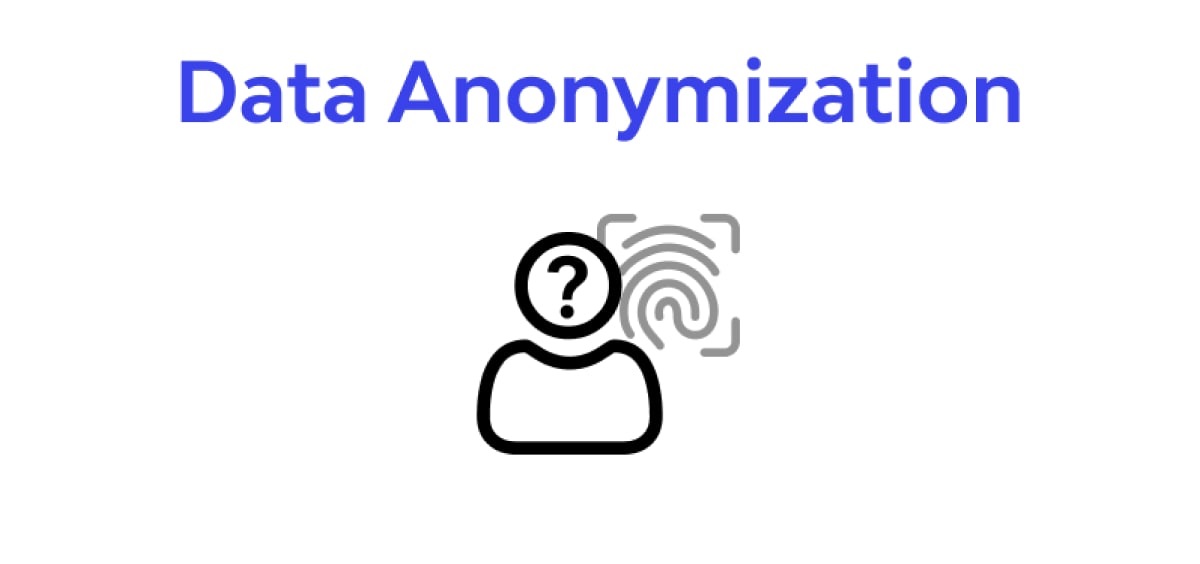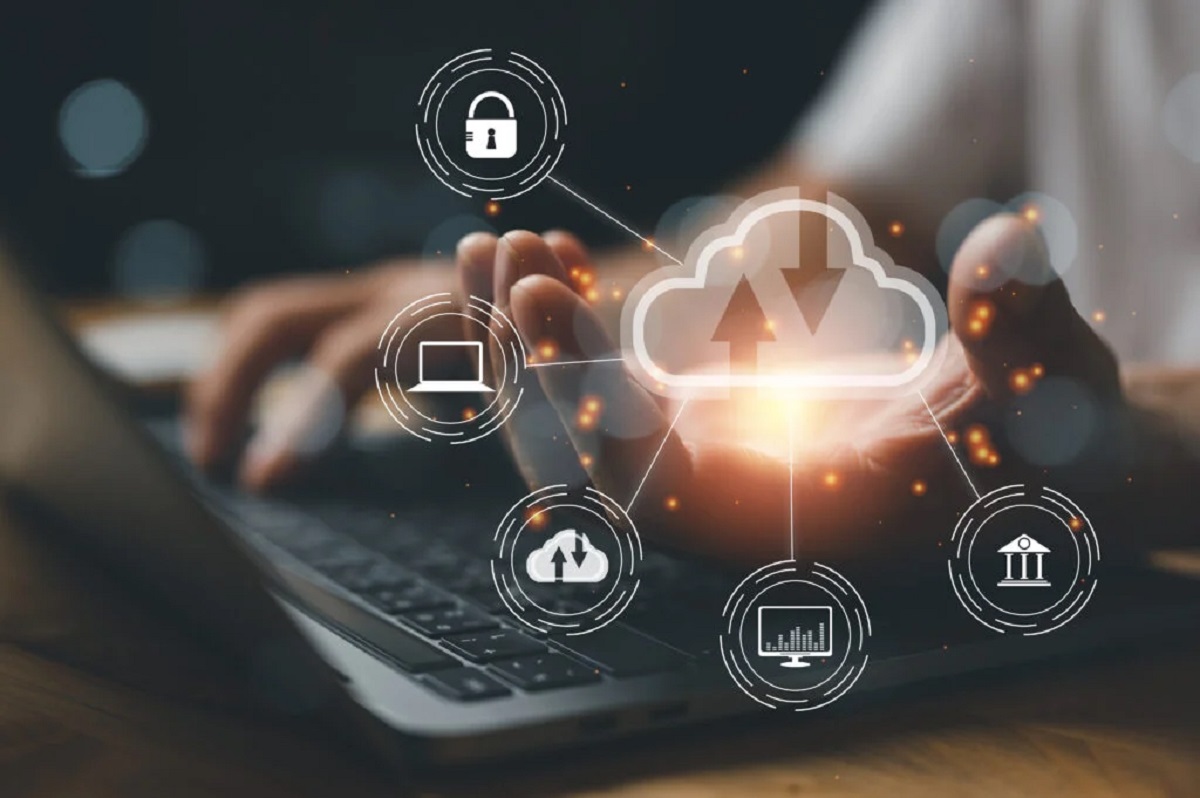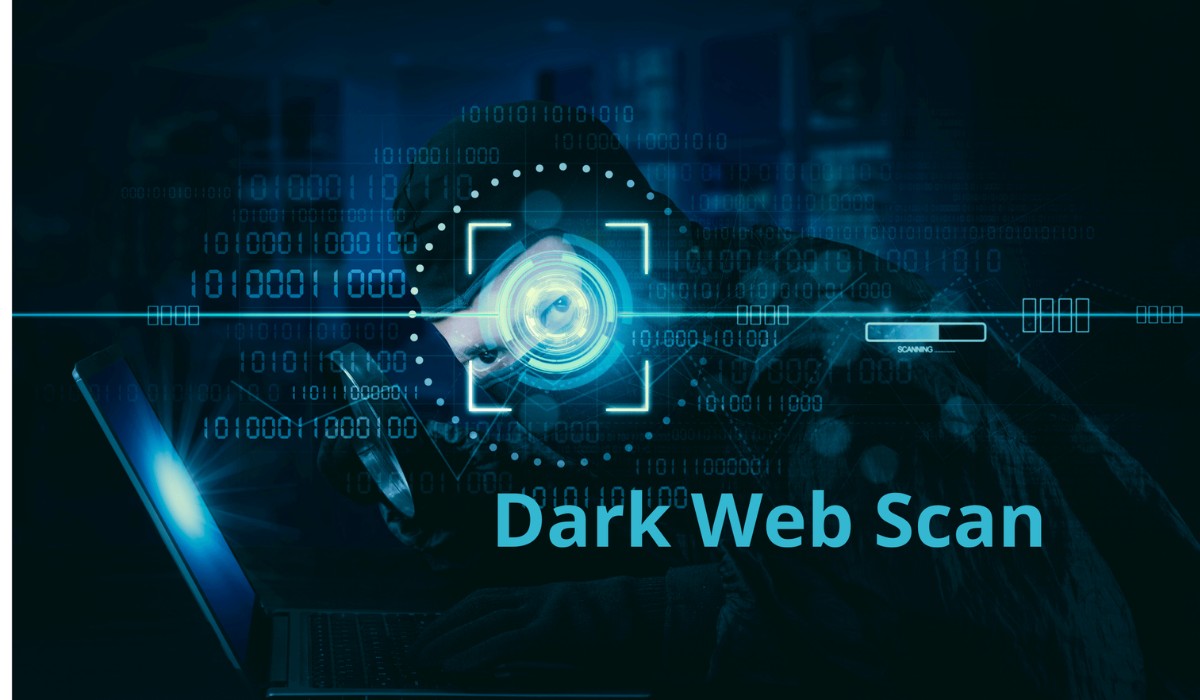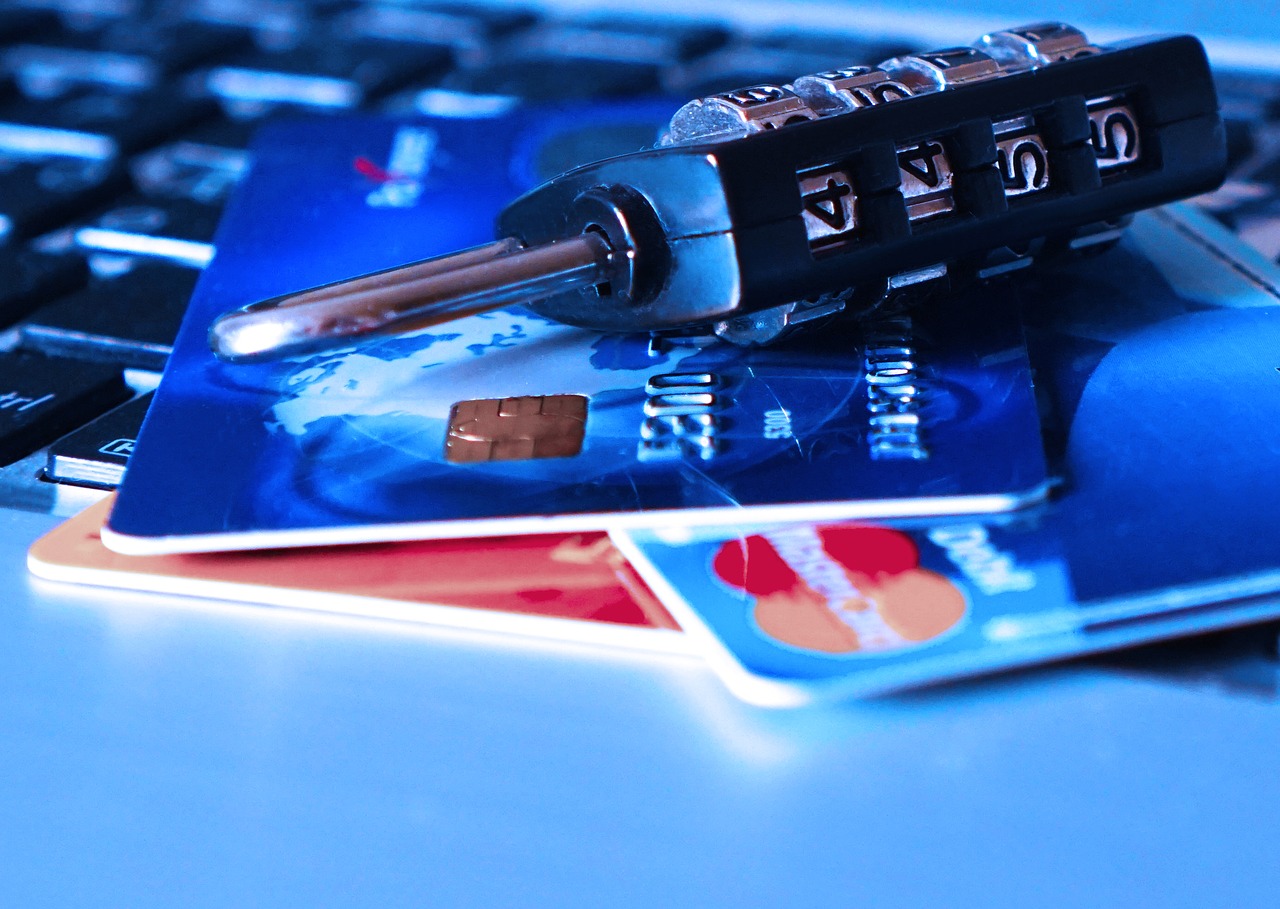Introduction
In today’s digital age, cybersecurity has become a paramount concern for individuals and organizations alike. With the increasing sophistication of cyber threats, safeguarding sensitive data and maintaining privacy has become a top priority. Anonymization, the process of removing personally identifiable information (PII) from data sets, plays a crucial role in preserving privacy and protecting against unauthorized access.
Anonymization refers to the transformation of data in such a way that the identity of the individuals or entities it represents remains hidden. By de-identifying data, it becomes much more challenging for cybercriminals to link it to specific individuals or conduct targeted attacks.
The importance of anonymization in cybersecurity cannot be overstated. By anonymizing data, organizations can strike a balance between utilizing valuable information for analysis and keeping the privacy of individuals intact. This is particularly critical in sectors such as healthcare, finance, and e-commerce, where large volumes of personal data are collected and analyzed.
However, despite its importance, anonymization poses several challenges in the realm of cybersecurity. In this article, we will explore the various challenges associated with anonymization and discuss strategies to overcome them.
Definition of Anonymization
Anonymization is the process of transforming data in a way that it can no longer be linked to an individual or entity. This technique involves removing or altering personally identifiable information (PII) from a dataset, rendering it anonymous while still retaining its analytical value.
The main objective of anonymization is to protect the privacy of individuals and organizations by preventing the identification or re-identification of individuals from their data. PII includes any information that can be used to directly or indirectly identify an individual, such as names, addresses, Social Security numbers, phone numbers, or unique identifiers. Anonymization techniques ensure that these identifiers are obfuscated or removed to minimize the risk of data breaches or unauthorized access.
There are different approaches to anonymization. One commonly used technique is data masking, which replaces sensitive data with fictional or random data. This can be done through techniques like generalization, where specific values are replaced with broader categories (e.g., replacing exact ages with age ranges). Another technique is suppression, where certain data elements are completely removed from the dataset, making it impossible to identify individuals even through indirect means.
It is important to note that anonymization is not an exact science and the level of anonymity achieved can vary. The effectiveness of anonymization depends on various factors, including the quality of data, the methods used, and the specific requirements of the use case. A well-anonymized dataset should not only protect the privacy of individuals but also retain enough utility to be useful for analysis purposes.
Overall, anonymization serves as a vital tool in ensuring data privacy and mitigating the risk of unauthorized access. By separating individuals from their data, anonymization allows organizations to use and share data while minimizing the potential harm or privacy violations that could arise from its misuse.
Importance of Anonymization in Cybersecurity
Anonymization plays a critical role in preserving privacy and maintaining the security of data in the realm of cybersecurity. Here are some key reasons why anonymization is of paramount importance:
Protecting Personal Privacy: Anonymization ensures that individuals’ personal information remains hidden and separated from the data being analyzed or shared. By removing or obfuscating personally identifiable information (PII), anonymization helps to safeguard privacy and prevent the unauthorized disclosure or misuse of sensitive information.
Compliance with Regulations: Many jurisdictions and industries have strict data protection regulations, such as the General Data Protection Regulation (GDPR) in the European Union. Anonymization techniques help organizations comply with these regulations by reducing the risk of data breaches and ensuring that individuals’ personal information is adequately protected.
Minimizing the Risk of Data Breaches: Anonymizing data reduces the risk of data breaches as the sensitive information is either removed or altered in such a way that it cannot be linked to individuals. This significantly mitigates the potential damage that can occur if sensitive information falls into the wrong hands.
Enabling Data Sharing: Anonymization allows organizations to share data while protecting the privacy of individuals. This is particularly important in collaborative research, public health analysis, and other scenarios where it is crucial to combine data from multiple sources. Anonymization ensures that the shared data cannot be linked back to specific individuals, enabling more extensive analysis and insights.
Supporting Ethical Data Use: Anonymization helps to maintain ethical standards in data usage. It allows organizations to analyze data for research and decision-making purposes without violating individuals’ privacy rights. This is especially relevant in industries such as healthcare, where the analysis of large datasets can lead to advancements in medical research and patient care without compromising confidentiality.
Building Trust: By implementing effective anonymization practices, organizations demonstrate their commitment to protecting individuals’ privacy and valuing data security. This fosters trust among customers, clients, and stakeholders, strengthening the organization’s reputation and enhancing its relationships with its data subjects.
Overall, anonymization is a vital component of cybersecurity, contributing to the protection of personal privacy, compliance with regulations, minimization of data breach risks, facilitation of data sharing, ethical data use, and building trust. By implementing robust anonymization techniques, organizations can strike a balance between data usability and privacy protection, ultimately enhancing their overall cybersecurity posture.
Challenges of Anonymization in Cybersecurity
Anonymization is not without its challenges when it comes to cybersecurity. While anonymization techniques are designed to protect privacy and secure data, there are several hurdles that organizations must overcome. Here are some of the key challenges:
1. Re-identification Risk: Even with careful anonymization, there is always a risk of re-identification. Attackers can use various methods, such as data linkage and external data sources, to re-identify individuals from anonymized data. This risk becomes more significant when dealing with datasets that contain unique or quasi-identifiers, such as demographic information or location data.
2. Incomplete Anonymization: Achieving complete and effective anonymization is a complex task. Ensuring that all personally identifiable information (PII) is appropriately removed or transformed while still maintaining the usefulness of the data is a delicate balance. In some cases, incomplete anonymization can occur, leaving residual identifiers or patterns that could potentially lead to re-identification.
3. Data Linkage: Anonymization can be challenging when dealing with multi-source datasets. If a dataset is not properly anonymized, it can potentially be linked with other datasets, enabling an attacker to re-identify individuals through data correlation. Protecting against data linkage requires careful consideration and techniques such as k-anonymity, which involves ensuring that each record in a dataset is indistinguishable from at least k-1 other records.
4. Statistical Attacks: Anonymized data can be vulnerable to statistical attacks where attackers exploit statistical patterns or background knowledge to infer sensitive information. These attacks utilize techniques such as data mining, machine learning, or statistical analysis to uncover patterns and correlations within the anonymized data, which could potentially lead to re-identification or unauthorized access to sensitive information.
5. De-anonymization Techniques: There are various de-anonymization techniques available to attackers that can undermine the effectiveness of anonymization. These techniques include algorithms such as the ones used in re-identification attacks, correlation attacks, or the inference of private information based on publicly available data. As technology continues to advance, new de-anonymization methods are constantly being developed, making it crucial for organizations to stay updated and adapt their anonymization practices accordingly.
Addressing the complexities involved in ensuring digital privacy necessitates a comprehensive strategy that includes effective anonymization practices, continuous innovation, and an in-depth grasp of potential security flaws. Key to this approach is the enhancement of privacy and security measures in the digital realm, where the idea of decentralized identity stands out as a promising avenue. In the context of enhancing privacy and security in the digital age, the concept of decentralized identity emerges as a promising solution to reinforce the effectiveness of anonymization techniques by giving individuals control over their personal information. This initiative empowers users to manage their own data, thereby bolstering the defense against re-identification and unauthorized data breaches.
Re-identification Risk
One of the significant challenges associated with anonymization in cybersecurity is the risk of re-identification. Re-identification refers to the process of linking anonymized data back to the individuals it represents. Despite anonymization efforts, attackers can use various techniques and external data sources to piece together information and identify individuals within anonymized datasets.
A common method used in re-identification attacks is data linkage. By combining anonymized information with external datasets that contain personally identifiable information (PII), attackers can cross-reference the data and infer the identities of individuals. This risk is particularly pronounced when dealing with datasets that contain unique or quasi-identifiers, such as date of birth, gender, or location data.
Furthermore, as technology advances, attackers are developing increasingly sophisticated algorithms and machine learning techniques to perform re-identification attacks. These methods leverage statistical patterns, correlations, or background knowledge to infer sensitive information from the anonymized data. The more data an attacker can access, the higher the likelihood of successful re-identification.
To mitigate the re-identification risk, organizations must consider several strategies:
Data Minimization: Minimizing the collection and retention of personally identifiable information (PII) is a vital step in reducing the re-identification risk. By only collecting necessary data and discarding unnecessary information, organizations can limit the amount of data that could potentially be linked with external sources.
Robust Anonymization Techniques: Implementing strong anonymization techniques, such as data masking, aggregation, and perturbation, is crucial to protecting against re-identification risk. These techniques help ensure that no individual can be uniquely identified or linked to specific data points, making it more challenging for attackers to infer personal information.
K-Anonymity: Employing k-anonymity techniques can reduce re-identification risk. K-anonymity aims to make each record in a dataset indistinguishable from at least k-1 other records. This increases the difficulty of identifying individuals within the dataset, as the available information becomes less specific.
Data Access Policies: Implementing strict access controls and limiting access to anonymized datasets can help prevent unauthorized re-identification attempts. By ensuring that only authorized personnel can access the data and enforcing data sharing agreements, organizations can minimize the potential for malicious or unintended re-identification.
Ongoing Evaluation and Improvement: Regularly evaluating the effectiveness of anonymization techniques and staying current with advancements in re-identification methods is crucial. By staying updated on emerging risks and adopting evolving best practices, organizations can stay one step ahead of potential attackers.
By implementing a combination of these strategies, organizations can minimize the re-identification risk and protect the privacy of individuals within anonymized datasets. However, it is important to recognize that re-identification remains an ongoing challenge, requiring continuous vigilance and proactive measures to address emerging risks.
Incomplete Anonymization
In the realm of anonymization, one of the significant challenges faced by organizations is the potential for incomplete anonymization. Incomplete anonymization refers to situations where sensitive data is not adequately transformed or removed, inadvertently leaving residual identifiers or patterns that could lead to the re-identification of individuals.
Ensuring complete and effective anonymization is a complex task that requires a delicate balance between privacy protection and data utility. Organizations must take great care to remove or obfuscate personally identifiable information (PII) while retaining the usefulness and accuracy of the data for analysis purposes.
There are various reasons why incomplete anonymization may occur:
Lack of Granularity: Anonymization techniques, such as generalization or suppression, may result in the loss of fine-grained details. While this protects individual privacy, it can also diminish the accuracy and utility of the data for certain analytical purposes. Balancing generalization or suppression with maintaining data utility is a challenging task that organizations must carefully consider.
Handling Unique Identifiers: Datasets containing unique identifiers, such as social security numbers, email addresses, or account numbers, pose a challenge for anonymization. Anonymizing such identifiers without compromising data quality requires sophisticated techniques that prevent re-identification while preserving data relationships and integrity. Incomplete anonymization in these cases can lead to the identification of individuals through indirect means or data correlation.
Emerging Data Types: As new data types and sources emerge, ensuring complete anonymization becomes more challenging. Techniques that have proven effective for structured, tabular data may not be suitable for unstructured or semi-structured data, such as text or multimedia. Organizations must continually adapt and develop anonymization techniques to address evolving data types and sources.
Technological Limitations: Despite advancements in anonymization techniques, there may still be technological limitations that hinder complete anonymization. For example, the emergence of machine learning algorithms capable of re-identifying individuals from anonymous data poses a significant challenge. Organizations must continually assess and leverage emerging technologies to enhance the effectiveness and completeness of anonymization techniques.
To overcome the challenge of incomplete anonymization, organizations can employ various strategies:
Data Privacy Impact Assessments: Conducting thorough assessments of data privacy risks and impacts prior to the anonymization process can help identify areas where incomplete anonymization may occur. This allows organizations to proactively address privacy concerns and implement appropriate techniques to achieve complete anonymization.
Data Quality Assurance: Implementing robust data quality assurance processes can help identify and rectify incomplete anonymization. Regular checks and audits are essential to ensure that privacy protection measures are effective and uphold the intended level of anonymization.
Continuous Improvement and Research: Investing in research and development efforts to enhance anonymization techniques is crucial. Staying informed about the latest advancements and trends in anonymization can help organizations adapt and overcome the challenges of incomplete anonymization.
By adopting these strategies, organizations can work towards achieving more complete anonymization and minimizing the risk of re-identification. However, it is important to recognize that complete anonymization is an ongoing challenge that requires continuous evaluation, improvement, and adaptation to effectively protect privacy in an ever-changing digital landscape.
Data Linkage
Data linkage poses a significant challenge when it comes to anonymization in cybersecurity. Data linkage refers to the process of combining anonymized data with external datasets to reveal individuals’ identities. This can occur through the correlation of shared attributes or the use of auxiliary information that can be linked to the anonymized data.
In situations where multiple datasets are available, attackers can attempt to link anonymized data with other datasets containing personally identifiable information (PII), such as names, addresses, or social media profiles. By identifying common elements or patterns, attackers can potentially re-identify individuals within the anonymized dataset.
Protecting against data linkage requires organizations to consider several strategies:
Data Fragmentation: Fragmenting the data into smaller subsets can help mitigate the risk of data linkage. By separating the data into more narrowly defined categories or subsets, it becomes more challenging for attackers to correlate the data and identify individual records.
Pseudonymization: Pseudonymization is a technique that replaces identifying information with pseudonyms or unique identifiers. By replacing personally identifiable attributes with unrelated values, data linkage becomes more difficult. However, it is essential to ensure that pseudonymization does not result in residual patterns or attributes that could be exploited for linkage.
Data Sharing Agreements: When sharing anonymized data with external parties, organizations should have clear and enforceable data sharing agreements in place. These agreements should specify the purpose and scope of data usage, ensuring that the recipient cannot link the anonymized data to any other personal information or dataset.
Disclosure Control Techniques: Incorporating disclosure control techniques, such as adding noise or perturbation to the data, can disrupt patterns and minimize the risk of linkage. These techniques introduce statistical noise or random variations to the anonymized data, making it harder for attackers to establish meaningful correlations.
Anonymization with Differential Privacy: Differential privacy is a privacy-preserving framework that provides mathematical guarantees against data linkage. It involves injecting carefully calibrated noise into the data to protect individual privacy while still maintaining data utility. Implementing anonymization techniques based on differential privacy can significantly reduce the risk of data linkage.
Proactively addressing data linkage challenges is vital to uphold the privacy and security of anonymized data. By utilizing fragmentation, pseudonymization, data sharing agreements, disclosure control techniques, and anonymization based on differential privacy, organizations can minimize the risk of data linkage and protect sensitive information from being re-identified.
In addition to these strategies, staying informed about emerging data linkage techniques and continuously examining and improving anonymization processes is crucial. By remaining vigilant and adaptive, organizations can enhance the effectiveness of their anonymization efforts and ensure the integrity of anonymized datasets.
Statistical Attacks
Statistical attacks pose a significant challenge to anonymization in the realm of cybersecurity. These attacks leverage statistical patterns and background knowledge to infer sensitive information from anonymized datasets, potentially leading to the re-identification of individuals or unauthorized access to confidential data.
Statistical attacks exploit the inherent patterns and correlations present in anonymized data. By applying data mining techniques, machine learning algorithms, or statistical analysis methods, attackers can identify patterns that reveal personal or sensitive information.
There are several types of statistical attacks that organizations must be aware of:
Correlation Attacks: Attackers can cross-reference anonymized data with external or publicly available datasets to identify correlations and infer sensitive information. For example, by linking anonymized healthcare data with publicly available demographic information, an attacker might be able to deduce the medical conditions of individuals.
Background Knowledge Attacks: Attackers with prior knowledge about individuals or data sources can exploit this information to perform statistical attacks. By leveraging background knowledge, attackers can narrow down the possibilities and increase the accuracy of re-identification.
Pattern Recognition Attacks: Using data mining techniques or machine learning algorithms, attackers can discover patterns within the anonymized data that reveal sensitive information. By identifying recurrent patterns or statistical anomalies, attackers can infer private attributes or even reconstruct the original data.
Inference Attacks: Attackers can employ inference techniques to extract information indirectly from the anonymized data. By combining multiple attributes or leveraging domain-specific knowledge, they may be able to deduce sensitive details that were not initially disclosed.
Organizations can employ the following strategies to mitigate the risk of statistical attacks:
Noise Addition: By introducing random noise or perturbation to the data during the anonymization process, organizations can disrupt statistical patterns and make it harder for attackers to extract meaningful information.
Data Swapping: Swapping or shuffling data values between records can further obfuscate statistical patterns and relationships within the anonymized dataset. This technique makes it challenging for attackers to identify consistent patterns or correlations.
Data Generalization: Generalizing specific data values to more general categories (e.g., replacing exact ages with age ranges) can help protect against statistical attacks. Generalization introduces variability and reduces the level of specificity, making it harder for attackers to infer sensitive information.
K-Anonymity: Implementing k-anonymity ensures that each record in a dataset is indistinguishable from at least k-1 other records. This reduces the granularity of the data and makes it more challenging for attackers to extract meaningful information.
Privacy Preserving Data Mining: Techniques such as secure multi-party computation or federated learning allow organizations to perform data analysis while keeping the data anonymized. By preserving privacy during the analysis phase, organizations can mitigate the risk of statistical attacks.
By incorporating these strategies into the anonymization process, organizations can significantly reduce the susceptibility to statistical attacks. However, it is important to stay informed about the latest developments in data mining and statistical inference techniques to continually enhance the effectiveness of anonymization and protect against emerging threats.
De-anonymization Techniques
De-anonymization techniques pose a considerable threat to anonymization and cybersecurity. These techniques aim to reverse the anonymization process by linking anonymized data back to individuals, potentially breaching privacy and compromising the security of sensitive information.
Attackers employ various methods to de-anonymize data. Some common de-anonymization techniques include:
Linkage Attacks: By linking anonymized data with external datasets, attackers can uncover correlational patterns that enable the re-identification of individuals. Linkage attacks exploit shared or auxiliary attributes between datasets to establish connections and identify specific individuals.
Attribute Inference: Attackers can infer sensitive attributes or personal information by leveraging statistical analysis or machine learning algorithms. By applying sophisticated techniques, attackers can deduce undisclosed attributes or reconstruct the original data from the anonymized dataset.
Background Knowledge Exploitation: Attackers with prior knowledge about individuals or data sources can exploit this information to de-anonymize the data. By combining background knowledge with the information contained in the anonymized dataset, attackers can increase the accuracy of their re-identification attempts.
Pattern Recognition: Attackers can deploy pattern recognition algorithms or data mining techniques to uncover patterns within the anonymized data. By identifying recurrent patterns or statistical anomalies, de-anonymization can be achieved, potentially leading to the identification of individuals or disclosure of sensitive information.
To mitigate the risk posed by de-anonymization techniques, organizations can employ the following strategies:
Data Perturbation: By introducing intentional noise or perturbation into the data during the anonymization process, organizations can make it more challenging for attackers to accurately de-anonymize the data. Perturbation techniques can disrupt patterns and relationships, reducing the effectiveness of de-anonymization attempts.
Data Minimization: Minimizing the collection and retention of personally identifiable information (PII) can reduce the amount of data available for de-anonymization. By only collecting necessary data and discarding unnecessary information, organizations limit the potential for de-anonymization attacks.
Secure Data Sharing: When sharing anonymized data with external parties, organizations should use secure channels and enforce stringent data sharing agreements. These agreements should prohibit attempts to de-anonymize the data and assign consequences for any breach of the agreement.
Privacy Enhancing Technologies: Implementing privacy-enhancing technologies, such as differential privacy or secure multi-party computation, can provide additional protection against de-anonymization techniques. These technologies preserve privacy during data analysis and sharing, limiting the risk of re-identification.
Regular Evaluation and Improvement: Continuously evaluating and improving anonymization techniques is crucial in the face of evolving de-anonymization methods. Organizations should stay informed about emerging threats and continuously update their anonymization practices to maintain robust protection against de-anonymization attempts.
Combining these strategies can significantly reduce the potential for successful de-anonymization attacks. However, it is important to note that attackers continually adapt their techniques, making it essential for organizations to remain vigilant and proactive in their approaches to anonymization and data security.
Strategies to Overcome Anonymization Challenges
Successfully overcoming the challenges associated with anonymization in cybersecurity requires a combination of strategies and best practices. By implementing the following strategies, organizations can enhance the effectiveness of their anonymization efforts and protect data privacy:
Robust Anonymization Techniques: Implementing strong anonymization techniques is crucial for protecting privacy and mitigating the risk of re-identification. Techniques such as data masking, generalization, suppression, and pseudonymization should be employed based on the nature of the data and the desired level of anonymization.
Data Quality and Pre-processing: Ensuring the quality and integrity of the data is essential for effective anonymization. Data cleansing and pre-processing should be performed to remove any errors, inconsistencies, or outliers that could compromise the anonymization process or lead to incomplete anonymization.
Privacy by Design: Incorporating privacy by design principles from the early stages of data collection and processing is crucial. By considering privacy throughout the entire data lifecycle, organizations can proactively integrate anonymization techniques and privacy protection measures without having to retroactively modify existing systems.
Strategic Data Collection: Collecting only the necessary and relevant data minimizes the risk associated with anonymization. By adopting a data minimization approach, organizations reduce the amount of personally identifiable information (PII) that needs to be anonymized, making the process more manageable and reducing the likelihood of incomplete anonymization.
Data Sharing Agreements and Policies: Establishing clear data sharing agreements and policies is vital when sharing anonymized data with external parties. These agreements should outline the purpose and scope of data usage, explicitly prohibit re-identification attempts, and specify the responsibilities and consequences for any breaches of the agreement.
Continuous Evaluation and Improvement: Regularly evaluating the effectiveness of anonymization techniques and staying aware of emerging threats and advancements is crucial. Organizations should invest in ongoing research and development efforts to keep up with evolving challenges and ensure their anonymization practices remain robust.
Education and Awareness: Promoting education and awareness around anonymization and data privacy among employees, stakeholders, and data subjects is essential. By fostering a privacy-conscious culture and providing training on best practices, organizations can ensure that everyone involved understands the importance of anonymization and their role in protecting data privacy.
Adherence to Regulations and Standards: Complying with privacy regulations and industry standards is crucial for effective anonymization. Organizations should stay updated on relevant laws, such as the General Data Protection Regulation (GDPR) or specific industry guidelines, and incorporate their requirements into their anonymization processes.
By incorporating these strategies into their cybersecurity practices, organizations can navigate and overcome the challenges associated with anonymization. However, it’s important to recognize that anonymization is a continuously evolving field, and staying proactive in adapting to new challenges and emerging best practices is crucial for maintaining the privacy and security of data.
Conclusion
Anonymization is a critical component of cybersecurity, enabling organizations to protect personal privacy, comply with regulations, and mitigate the risk of unauthorized access to sensitive data. However, it’s not without its challenges.
This article explored the challenges of anonymization in cybersecurity, including the risk of re-identification, incomplete anonymization, data linkage, statistical attacks, and de-anonymization techniques. Each challenge poses significant risks to the effectiveness of anonymization and the protection of individuals’ privacy.
To address these challenges, organizations can implement various strategies. Robust anonymization techniques, data quality assurance, privacy by design principles, and strategic data collection form the foundation for effective anonymization. Additionally, data sharing agreements, continuous evaluation and improvement, education, and adherence to regulations and standards are essential for maintaining the efficacy of anonymization practices.
The field of anonymization continues to evolve, and organizations must stay vigilant in adapting to emerging threats and advancements in techniques. Regular evaluation, ongoing research, and a commitment to privacy protection are crucial to ensuring the integrity of anonymized data and maintaining trust with customers, clients, and stakeholders.
By understanding the challenges and implementing the appropriate strategies, organizations can strike a balance between data utility and privacy protection. Anonymization serves as a vital tool in the cybersecurity arsenal, empowering organizations to leverage data for analysis while safeguarding individuals’ privacy in an increasingly data-driven world.

























